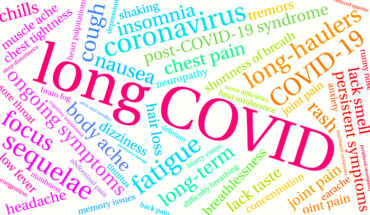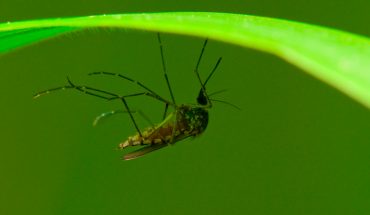Review summarizes known links between endocrine disruptors and breast cancer risk: Exposure to certain endocrine-disrupting chemicals could elevate the risk of breast cancer, according to a new comprehensive systematic review of epidemiological research.
However, for many chemicals, evidence is inconsistent or still limited. The review was carried out by researchers at the universities of Hong Kong and Eastern Finland and published in Critical Reviews in Food Science and Nutrition.
Endocrine-disrupting chemicals (EDCs) can interfere with the body’s hormonal system, also called the endocrine system, and are widely present in the environment. They originate from a variety of sources, including pesticides, plasticisers and other industrial and pharmaceutical chemicals, as well as natural sources. Humans are often exposed to EDCs through food, but other possible exposure routes include drinking water, skin contact and air.
Breast cancer accounts for the majority of women’s cancers. There has been an increasing interest in the role of estrogene-mimicking EDCs, so called xenoestrogens, in the development of breast cancer. They comprise a broad range of pesticides, synthetic chemicals, phytoestrogens and certain mycotoxins. The researchers reviewed 131 epidemiological studies evaluating the link between xenoestrogen exposure and breast cancer. Most studies assessed exposures by measuring the EDCs and their metabolites in urine, serum, plasma or adipose tissues.
Some may be genetically more vulnerable to EDCs
According to the review, the nowadays widely banned pesticide DDT is one of the most studied EDCs in relation to breast cancer risk. Out of 43 epidemiological studies, eleven reported positive associations between DDT or its metabolites in lipid, serum or plasma and breast cancer incidence. Nine reported higher DDT levels among women with breast cancer than among controls. In a few studies, DDT was linked to estrogen-positive breast cancer or the association to breast cancer risk depended on genotype.
Polychlorinated biphenyls, PCBs, are a large group of compounds earlier much used in electrical devices, surface coatings and other purposes. The review of 50 studies found the association between total PCBs and breast cancer risk to be inconsistent. However, 19 studies linked certain PCBs to a higher breast cancer incidence. Similar to DTT, PCBs accumulate in the adipose tissue and in the food chain and can be excreted in breast milk.
Perfluorooctanoid acid (PFOA) found in some food packaging and cookware was linked to breast cancer risk in three out of five epidemiological studies. Some studies found an association between cancer risk and certain genotypes both for PCBs and PFOAs.
DDT, PCBs ja PFOA are POP substances, persistent organic pollutants, the use of which is strictly regulated. DDT ja PCBs are old POP substances and their levels in the environment are decreasing. PFOA is a newer POP substance.
Phytoestrogens were found beneficial in some, but not all studies
Phytoestrogens are natural plant estrogens that have been suggested to prevent breast cancer. Genistein is a phytoestrogen found in soy products. The review included 29 epidemiological studies focusing on genistein, 18 of which linked it to a lower breast cancer risk, although some only in certain age groups or populations.
For most EDCs included in the review, the link to breast cancer has been investigated in only a few epidemiological studies. Phtalates and bisphenol A (BPA), for example, are used in plastic packaging and can transfer to food. According to the review, four out of six studies linked phthalates to increased breast cancer risk. BPA was linked to more aggressive tumours in one study, but two other epidemiological studies found no link to breast cancer.
Parabens are common preservatives in foods and cosmetic products and considered possible endocrine disruptors. The only epidemiological study on the topic reported a link between paraben exposures, breast cancer risk and mortality following breast cancer.
Oral contraceptive use was linked to an increased breast cancer risk in seven out of eight epidemiological studies, but there were controversies on how duration or discontinuation of oral contraceptive use affected the risk.
The review also included the herbicide atrazine, the industrial by-product dioxine, mycotoxins produced by food and crop molds, and PBDEs found in household furniture coatings and appliances, but epidemiological studies on their links to breast cancer risk were still scarce and often inconsistent.
The writers point out that for EDCs to disrupt endocrine functions, dose, time, duration and age at exposure all matter. In addition, as multiple EDCs coexist in the environment, more research is needed to evaluate their interactive effects on breast cancer risk.
The review also suggests that genotypes could determine whether EDC exposure affects breast cancer risk, and more research is needed on this topic. “One example is the polymorphism of the CYP1A1 gene, which is responsible for estrogen metabolism.”
According to the writers, next-generation technologies, such as genome sequencing, proteomics or epigenomics, can help identify new exposure biomarkers with better sensitivity and specificity. “These technologies will also pave way to better assessment of past exposure and prediction of future risks, by taking into account an individual’s genetic profile.”
For further information, please contact: Professor Hani El-Nezamy, University of Eastern Finland / University of Hong Kong, tel. +358 40 591 5137, hani.el-nezami (at) uef.fi
https://uefconnect.uef.fi/henkilo/hani.el-nezamy/
Review article:
Murphy Lam Yim Wan, Vanessa Anna Co & Hani El-Nezami (2021) Endocrine disrupting chemicals and breast cancer: a systematic review of epidemiological studies, Critical Reviews in Food Science and Nutrition, DOI: 10.1080/10408398.2021.1903382
- New lipid-based pathway discovered as key to memory formation - 25th June 2025
- Crucial link could explain how Alzheimer’s takes hold - 25th June 2025
- Understanding Your Mind Can Improve Daily Life - 25th June 2025







